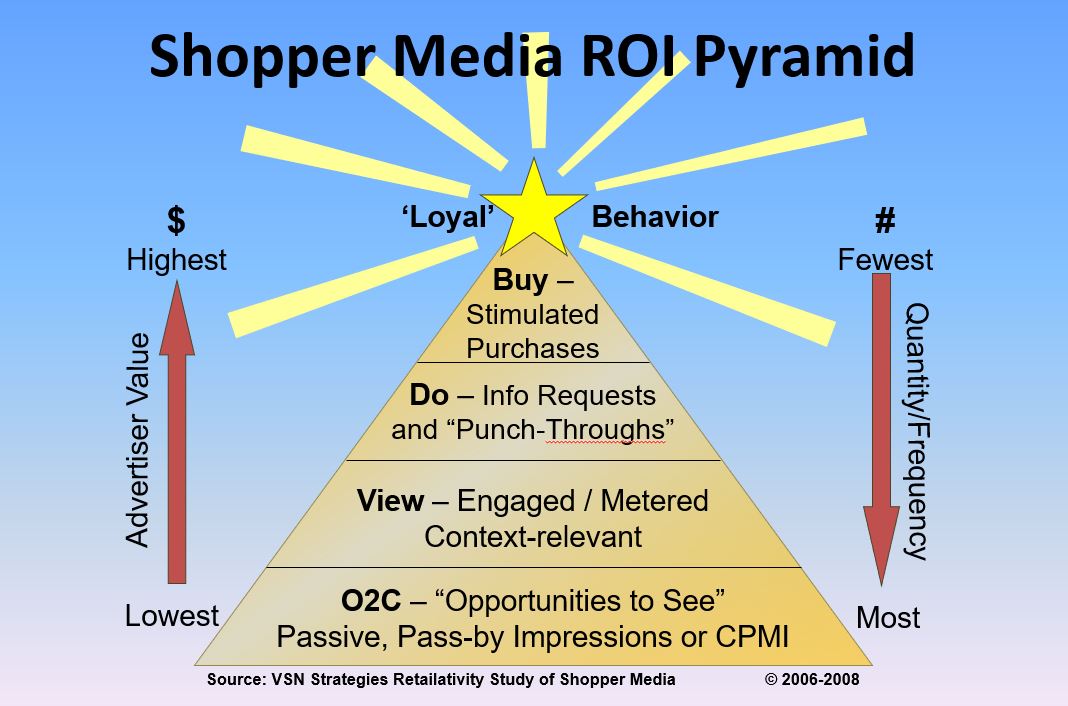 |
ALL THE RECENT chatter about “social media for business” is driving me around the bend.
For some time now, I’ve been searching for a terminology that would rescue us from imprecision and allow a meaningful business conversation to take place around the impact of smart phones within the retail environment.
At the National Retail Federation Conference and Expo two weeks ago in New York, the presentations and pitches frequently turned to the impact of social and mobile media, and I kept cringing every time I heard it. Here’s why it bugs me so much:
When new business phenomena have arisen in retail marketing, sloppy terminology frequently led to poor initial understanding of the business opportunity. Often it is due to a choice of words laden with confusing prior connotation – or the absence of a suitable term.
We sometimes used “consumer” and “shopper” interchangeably; now we distinguish between those two customer roles. We spoke of “manufacturers” or “vendors” before the term “brand marketer” was introduced in the mid-90s. A deficient thought vocabulary renders some concepts virtually unthinkable.
In Your Facebook
Today, most of the marketers and solution vendors obsessed with “social media” are in fact formulating new ways of delivering one-on-one messages to targeted shoppers and attempting to influence what they do and say on social networking sites. It’s undeniable that one particular application – Facebook – happens to be used heavily for social play and sharing of consumer lore. Marketers are dazzled by the massive “audience” it has accumulated and are salivating to exploit the opportunity. How fortunate for Facebook investors.
But setting up corporate pages on Facebook or Twitter does not a strategy make. Indeed the existence of these pages implies a broadcast mentality – from us to them. Despite the open visibility of customer comments on the wall, there seems to be relatively little interaction between consumers on these pages. Old comments get quickly buried behind newer ones, and only our social media hired guns bother to track and analyze them – in reports calculated to justify their existence.
Regardless of the channel, shopping is primarily about each individual’s personal success – get the best deals; satisfy my needs most efficiently; manage my budget; impress my friends; etc. When a shopper turns to his or her personal mobile device to access tools to enhance in-store success, it’s a very personal action motivated by very understandable self-interest.
Getting Personal
I submit that when it comes to tapping shoppers via those pocket two-way radiowave computers we call smartphones, there’s very little “social” about it. It’s not social – it’s personal.
If we conceive of the mobile device as a personalized channel for interaction between retailers or brands with individual shoppers or consumers, then we would do well to set aside the imprecise term “social media” and start talking shop. These new media are personal media. Much of what happens on them may be social in nature, but everything that happens on them is personal.
The personal mobile device is taking shape as a personal nexus, where online, in-store, social, and commercial communications converge in unique combinations tailored by and for each individual. Each of us shifts roles at will, according to our objectives of the moment – searcher, receiver, reporter, sender, aggregator, re-transmitter, gatekeeper, purchaser, advisor.
Businesses that hope to play effectively in this incredibly fluid and fast-changing media environment had best get their minds around the personal nature of the shopper experience using mobile devices. When we discuss our strategy for personal media, the marketing mindset shifts in what I think is a constructive direction. Better decisions and practices must surely follow.
As for me, I have nothing against online friendships; but when it comes to business you may count me as anti-social. My reasons? Well, they’re personal.

